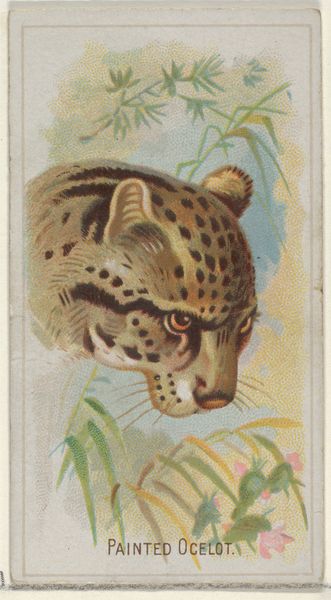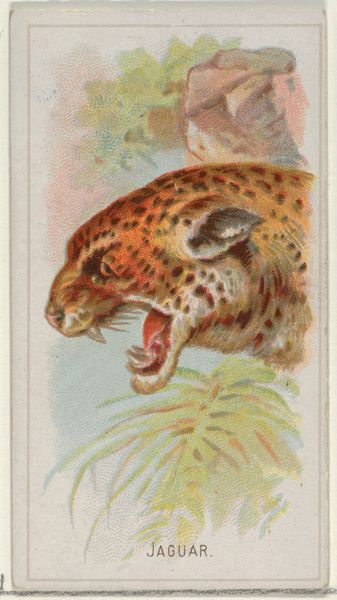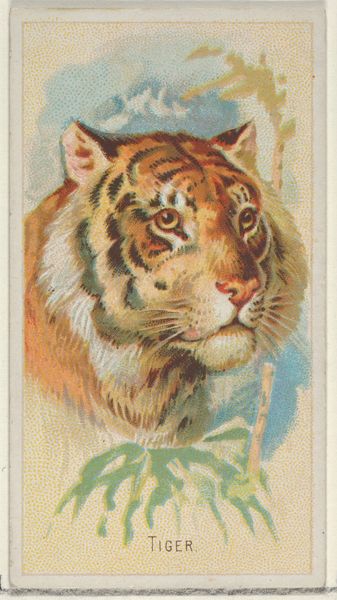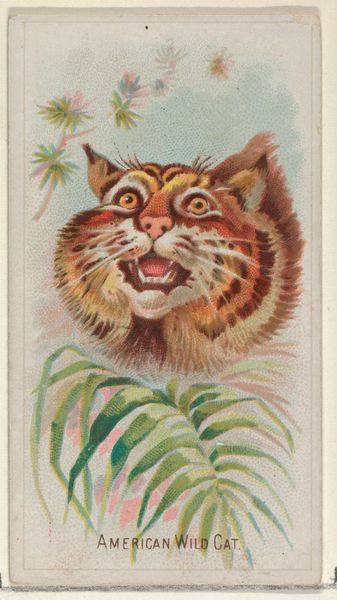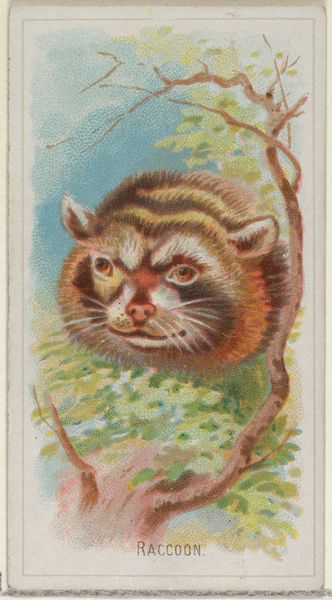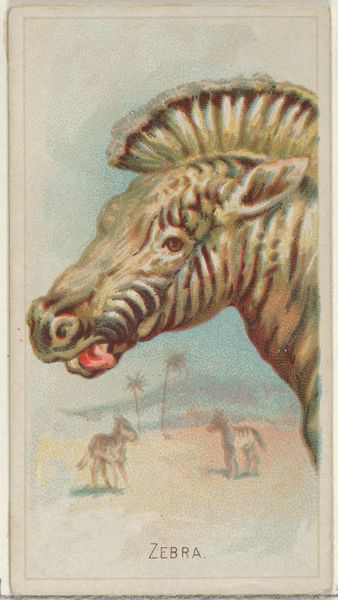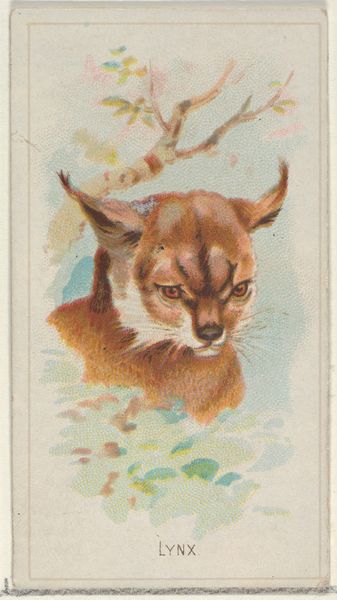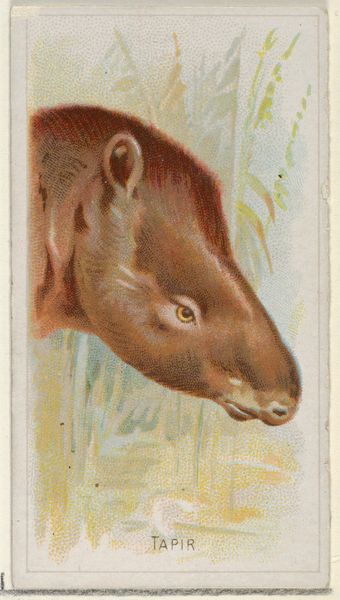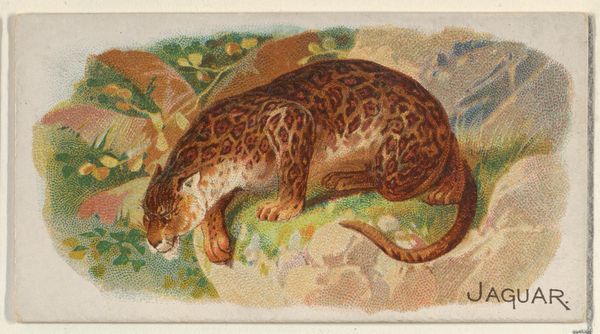
Leopard, from the Wild Animals of the World series (N25) for Allen & Ginter Cigarettes 1888
0:00
0:00
#
animal
# print
#
coloured pencil
#
watercolour illustration
#
watercolor
Dimensions: Sheet: 2 3/4 x 1 1/2 in. (7 x 3.8 cm)
Copyright: Public Domain
Editor: This is "Leopard, from the Wild Animals of the World series" made in 1888 by Allen & Ginter, using watercolor and colored pencil, it looks like it was a trading card. What a captivating rendering! It almost feels like I could reach out and touch the animal’s fur. What's your perspective on this piece? Curator: Well, consider the materials – watercolor, colored pencil, even the card stock itself. These aren't materials of "high art" in the traditional sense, but tools of mass production, of *consumption*. These cards were designed to be collected, traded, even discarded. Editor: I see your point! I guess I didn't initially think of it like that. Curator: It's fascinating to consider this artwork within the context of late 19th-century consumer culture. These weren't intended as enduring masterpieces, but ephemeral objects tied to the Allen & Ginter cigarette brand. The imagery of the exotic animal certainly played a role in shaping popular ideas of the 'Wild'. Do you think it romanticizes labor practices used in its production? Editor: That's interesting. It wasn't something I'd thought about at all initially. It brings up ideas about colonialism too – this depiction of a leopard being circulated to sell cigarettes, perhaps downplaying the labor or resource extraction used to manufacture and distribute this card, and the cigarettes. Curator: Precisely! And how that process is deliberately obscured and disguised through beautiful artwork. The means of production aren’t really displayed. Editor: This definitely changes how I see this seemingly simple picture. It highlights connections between art, commerce, and power in the 19th century in a very surprising way. Thanks for expanding my perspective! Curator: My pleasure! Examining the materials and how an artwork was manufactured or distributed always opens new pathways.
Comments
No comments
Be the first to comment and join the conversation on the ultimate creative platform.
